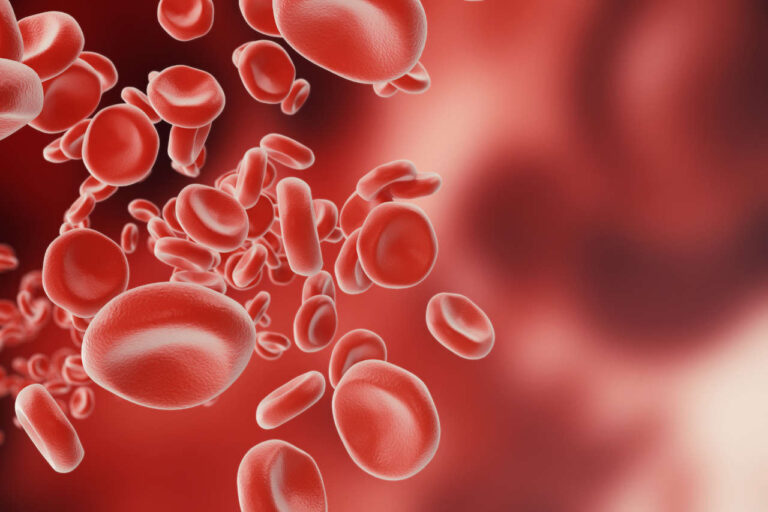
How Does Jakafi Work?
Jakafi (ruxolitinib) is a protein kinase inhibitor that inhibits certain enzymes called Janus kinases (JAK), which are involved in the production and growth of red blood cells. In myelofibrosis (bone marrow cancer) or polycythemia vera (a rare blood disorder), the Janus kinases are overactive, which leads to uncontrolled production of blood cells that can migrate to other organs such as the spleen and cause enlargement. Ruxolitinib inhibits specific signaling pathways and thus stops this overproduction of blood cells.
Speak to a Specialist
What Is Jakafi Used For?
- Myelofibrosis: Jakafi is indicated for the treatment of intermediate or high-risk myelofibrosis (MF). This includes primary MF, post-polycythemia vera MF and post-essential thrombocythemia MF in adults.
- Polycythemia vera: Jakafi is indicated for the treatment of polycythemia vera (PV) for adults who have experienced an inadequate response to or intolerance of hydroxyurea.
- Acute graft-versus-host disease: Jakafi is indicated for the treatment of steroid-refractory acute graft-versus-host disease (aGVHD) in adults and pediatric patients who are over 12 years of age.
- Chronic graft-versus-host disease: Jakafi is indicated for the treatment of chronic graft-versus-host disease (cGVHD) in adults and pediatric patients (over 12) after failure of one or two lines of systemic therapy.
Dosage
Myelofibrosis
The recommended starting dose is based on platelet count:
- For platelets between 50,000/mm³ and 100,000/mm³ : 5 mg twice daily
- For platelets between 100,000/mm³ and 200,000/mm³ : 15 mg twice daily
- For platelets > 200,000/mm³ : 20 mg twice daily
Blood work is done before initiating therapy, every 2 to 4 weeks until doses are stabilized, and then as clinically indicated.
Doses will be titrated and adjusted by your doctor based on safety, efficacy, and ongoing platelet count.
Polycythemia Vera
For polycythemia vera, the recommended dose is 10 mg twice daily.
Blood work is done before initiating therapy, every 2 to 4 weeks until doses are stabilized, and then as clinically indicated.
Doses will be titrated and adjusted by your doctor based on safety, efficacy, and ongoing hemoglobin and platelet count.
Acute Graft-Versus-Host Disease
For acute graft-versus-host disease, the recommended dose is 5 mg given orally twice daily.
Blood work is done before initiating therapy, every 2 to 4 weeks until doses are stabilized, and then as clinically indicated.
Doses will be titrated and adjusted by your doctor based on safety, efficacy, and ongoing absolute neutrophil count (ANC) and bilirubin level.
Chronic Graft-Versus-Host Disease
For chronic graft-versus-host disease, the recommended dose is 10 mg given orally twice daily.
Blood work is done before initiating therapy, every 2 to 4 weeks until doses are stabilized, and then as clinically indicated.
Doses will be titrated and adjusted by your physician based on safety, efficacy, and ongoing ANC and bilirubin level.
Speak to a Specialist About Copay Assistance
Jakafi Dose Modifications
Concomitant Use With Strong CYP3A4 Inhibitors
Certain medications that are CYP3A4 inhibitors, such as fluconazole, increase the amount of Jakafi in the blood. This can therefore increase the risk of adverse reactions. Let your doctor know about all medications you are taking before starting Jakafi as a dose reduction may be required if taken with any CYP3A4 inhibitors.
Concomitant Use With Strong CYP3A4 Inducers
Certain medications that are CYP3A4 inducers decrease the amount of Jakafi in the blood. This can therefore decrease efficacy. Let your doctor know about all medications you are taking before starting Jakafi as a dose adjustment may be required if taken with any CYP3A4 inducers.
Kidney Dysfunction
If you have kidney impairment, your dose will need to be adjusted. If you have end-stage renal disease (ESRD) not requiring dialysis, Jakafi should be avoided. Let your doctor know if you have any type of kidney impairment.
Liver Dysfunction
If you have liver impairment, your dose will need to be adjusted. Let your doctor know if you have any type of liver impairment.
Duration of Therapy
Your doctor may allow up to 6 months to see if Jakafi works for you. If there is no improvement after 6 months of treatment, your doctor may have you stop taking the medication.
It is important you take Jakafi exactly as prescribed. Do not stop taking it without speaking to your doctor first. The only exception is if you start bleeding. If this happens, stop taking Jakafi and call your doctor immediately.
Side Effects
The most common side effects are:
- Thrombocytopenia (low platelets)
- Anemia (low red blood cell counts)
- Neutropenia (low white blood cell counts)
- Risk of infection (i.e., tuberculosis, progressive multifocal leukoencephalopathy, herpes zoster, and hepatitis B)
- Bruising
- Dizziness
- Headache
- Diarrhea
Get Copay Assistance
Financial AssistanceJakafi for Specific Populations
Pregnant Women
Women should not take Jakafi while pregnant or planning to become pregnant. It is not known if Jakafi will harm an unborn baby.
Breastfeeding Women
Do not breastfeed during treatment or for 2 weeks after the final dose. It is not known if Jakafi passes into breast milk.
REFERENCES:
1 Jakafi (ruxolitinib): Prescribing Information. Accessed on February 9, 2022. https://www.jakafi.com/pdf/prescribing-information.pdf
2 Jakafi (ruxolitinib) Benefits & side effect. Accessed December 5, 2021 https://www.jakafi.com/myelofibrosis/side-effects













